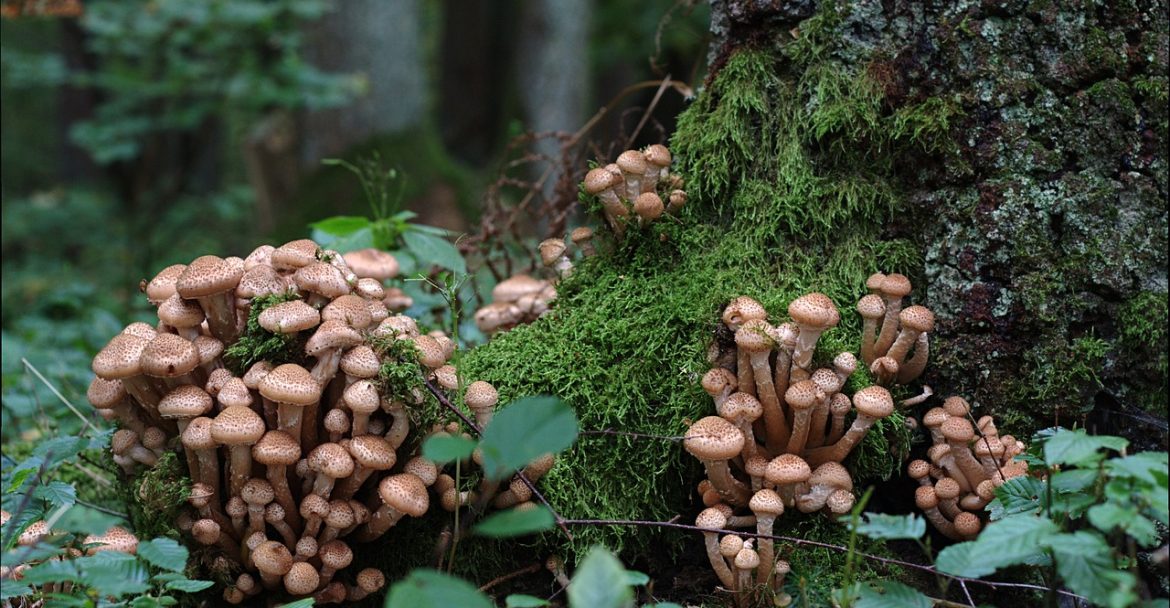Listen
Principle species colonised
The primary species that was colonised large variety of broadleaved and coni
ferous trees.
Area affected
The root system and lower stem, which are often less than 500 mm above the ground.
Type of decay
Dry and hard at first, the decay eventually turns into a usually moist white rot that frequently has black zone lines visible.
Fruit body and other fungal structures
Toadstools are light brown, honey-colored, and typically seen in groups above colonised roots or around the base of the tree. The cap may have dark scales on occasion and have a diameter of up to 150 mm. There are cream-coloured gills underneath. Below the cap, the stem has a ring that resembles a collar.
Time of year and perseverance Although it can form at any time, it usually does so in the autumn; it is transient and quickly decomposes.
Since A. mellea and other Armillaria species can develop rhizomorphs (bootlaces), which are often flattened, root-like, and fairly elastic structures, they cannot be used as a reliable identification tool. They are not always an indication of infection, but they might appear in the soil surrounding the main roots or stem base. If discovered beneath dead bark, which occasionally extends well above the ground, they signify fungal infestation, albeit this is not always the main reason for death. Fans of mycelial Under the bark of diseased trees, thick white felty mycelium fans are frequently visible.
Impact / Effect / Significance
Although it can colonise healthy tissues, this deadly fungus usually colonises trees that are already weak. Uprooting or, in rare cases, stem fracture can happen before or after the tree dies. When other (good) decay fungi provide natural control, the fungus can spread from colonised stumps and roots to other trees, especially if there is no natural suppression in the form of falling deadwood.


